Royal Navy destroyer HMS Dragon has been sharpening its capabilities at sea, conducting a series of Tests, Trials, and Training (TTT) exercises.
The Type 45 air-defence destroyer, launched in November 2008 and commissioned in April 2012, has spent recent years undergoing a major power improvement refit. HMS Dragon entered its refit phase in March 2022 as part of the Type 45 Power Improvement Project (PIP), designed to enhance the class’s propulsion systems and overall reliability.
Following extensive upgrades, Dragon is now nearing a return to frontline service. The recent sea trials have included high-speed manoeuvres and live-fire exercises, ensuring the ship and its crew are fully prepared for operational deployments.
As a specialist air-defence destroyer, HMS Dragon is equipped with the Sea Viper missile system, capable of engaging multiple airborne threats simultaneously.
With the final phase of trials underway, HMS Dragon is expected to resume active operations shortly, reinforcing the Royal Navy’s Type 45 fleet alongside HMS Daring, HMS Dauntless, and HMS Defender, which have also undergone PIP upgrades.
HMS DRAGON has been conducting Tests, Trials, and Training at Sea. From live-fire exercises to high-speed maneuvers, we’re sharpening our edge. #HMSDragon ⚓🔥 pic.twitter.com/estgpdqaAN
— HMS Dragon (@HMSDragon) February 13, 2025
At 152.4 metres long and displacing up to 8,500 tonnes, the vessel is powered by two Rolls-Royce WR-21 gas turbines and two Wärtsilä diesel generators, delivering speeds in excess of 30 knots. With an operational range of over 7,000 nautical miles, HMS Dragon is capable of sustained global deployments, housing a crew of 191 personnel, with accommodation for up to 235.
Equipped with advanced sensors and combat systems, HMS Dragon features the SAMPSON multifunction air tracking radar, S1850M 3D air surveillance radar, and the Ultra Electronics MFS-7000 sonar for underwater detection. A forthcoming upgrade, Sea Viper Evolution, will further enhance its ballistic missile defence capabilities.
HMS Dragon’s formidable arsenal includes 48 Sylver vertical launch system cells armed with Aster 15 and Aster 30 missiles, set to be supplemented with Sea Ceptor surface-to-air missiles from 2026.
The destroyer is also armed with a 4.5-inch Mark 8 naval gun, two 30mm DS30B cannons, and Phalanx close-in weapon systems (CIWS) for self-defence. For anti-ship operations, it is expected to receive Naval Strike Missiles, replacing the retired Harpoon system. The large flight deck and enclosed hangar allow HMS Dragon to deploy Wildcat or Merlin helicopters, enhancing its capability to conduct anti-submarine warfare and maritime strike missions.
At the UK Defence Journal, we aim to deliver accurate and timely news on defence matters. We rely on the support of readers like you to maintain our independence and high-quality journalism. Please consider making a one-off donation to help us continue our work. Click here to donate. Thank you for your support!


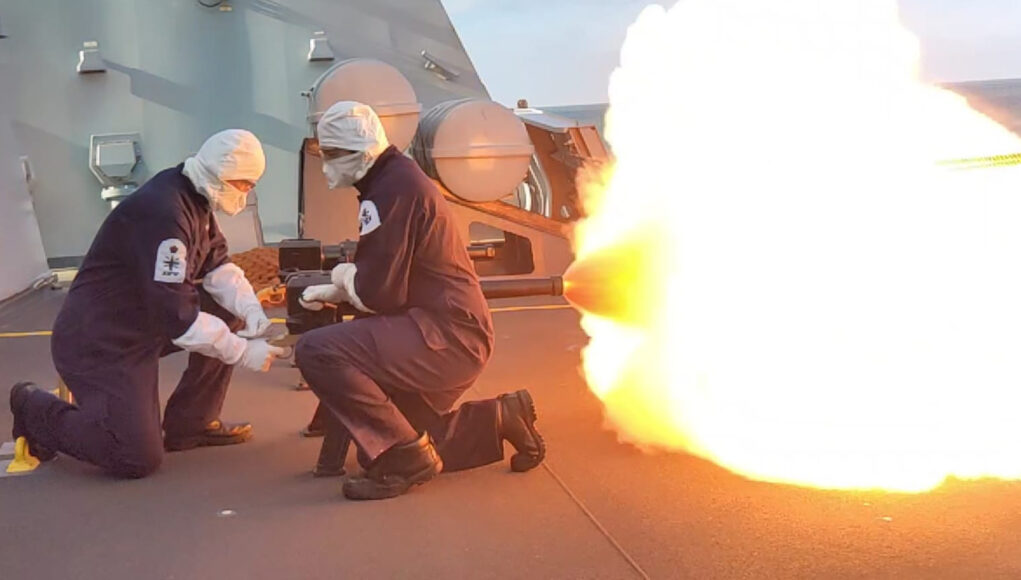
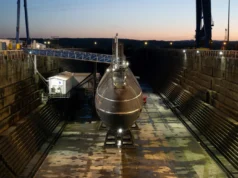

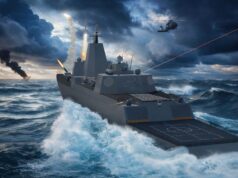
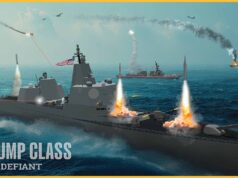



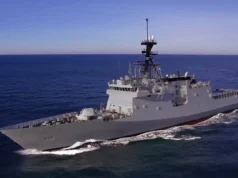
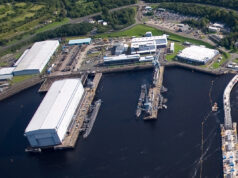

Impressive picture.
“ the vessel is powered by two Rolls-Royce WR-21 gas turbines and two Wärtsilä diesel generator”
That isn’t really true – it should read
“ the vessel is powered by upgrades two Rolls-Royce WR-21 gas turbines and three three MTU (3MW) V-20 Series 4000 DGs“
From NL
“ three MTU (3MW) V-20 Series 4000 DGs. Two of the three units were swapped directly but the additional engine was placed in the forward machinery room (FMR), an operation that involved cutting open the hull. A small part of the officer accommodation has been converted to house a new high-voltage switchboard room to help manage approximately 5MW of additional power now available. Other substantial tasks were to reconfigure the Platform Management System (PMS) and refurbish the two (21MW) WR21 Gas Turbine engines. The troublesome GT intercooler-recuperators have been replaced with a more reliable design.”
SB,
Ever observant, you bested me in the race to the keyboard w/ updated spec. 👍😉 (The article’s T-45 propulsion system description does remain accurate for HMS Duncan, until the next scheduled refit.)
A lot of the content of these articles is carried over from previous ones.
We are still waiting for clarity on which T45, (if any) will accompany Dauntless on CSG25. It’s not clear Dragon will be worked up in time for the expected early March departure. As for Duncan, is she still undergoing a maintenance and defect rectification period in Portsmouth? Even if materially fit, I can’t imagine that her crew will be thrilled about the prospect of another 6-7 month long deployment just 3 months after returning from the last. There’s a strong suspicion that Dauntless may prove to be the CSGs only specialist AAW platform, not ideal if a freedom of passage transit through the South China Sea is planned – the RN may have to beg the USN to provide an escort and supporting cover!
Duncan could go.
She hasn’t had PiP done but she hasn’t started PiP for a reason.
There might be a reason Dragon is working up?
Has she had the NSM racks fitted yet?
Not yet – but the Mounting Plates for the Racks have been welded to her Deck.
I was on her sister ship hms Dauntless yesterday and watched from the bridge dragon coming into the base and be turned 180 degrees with tug boats. Absolutely amazing and an honour to watch!
The correct calibre for a tin of Brasso Hms St Angelo in Malta bore marks where ships entering Valletta harbour would fire saluting guns ,and tins of brasso.
The correct calibre for a tin of Brasso Hms St Angelo in Malta bore marks where ships entering Valletta harbour would fire saluting guns ,and tins of brasso. George this post is not a duplicate please stop posting that